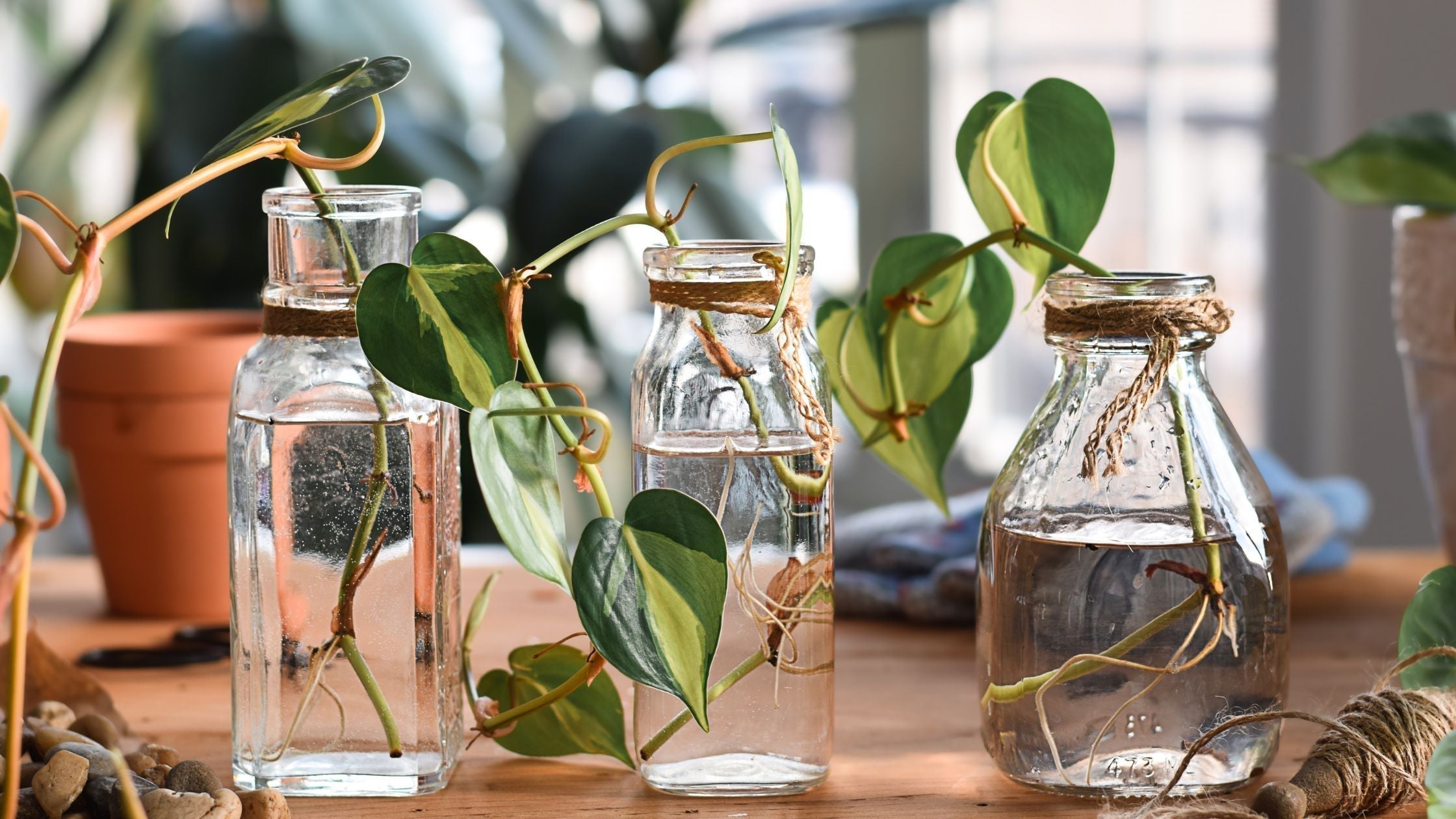
How to Propagate Houseplants from Cuttings
Table of Contents
- Propagating houseplants with stem cuttings
- What are plant nodes?
- Types of stem cuttings
- Which plants are easiest to propagate by stem cutting?
- How to propagate with a stem-cutting
- How long does it take a stem cutting to root?
- Propagating houseplants with leaf cuttings
- Two ways to add humidity to your propagation vessel
- Frequently asked questions:
Here at Southside, we are all about plant propagation, and we're especially passionate about propagating houseplants from cuttings.
Cuttings can be one of the easiest and most rewarding ways to propagate houseplants, but knowing where to snip for your particular plant and how to set up your cutting for success is essential.
There are two main ways to propagate plants by cutting: stem cuts and leaf cuts.
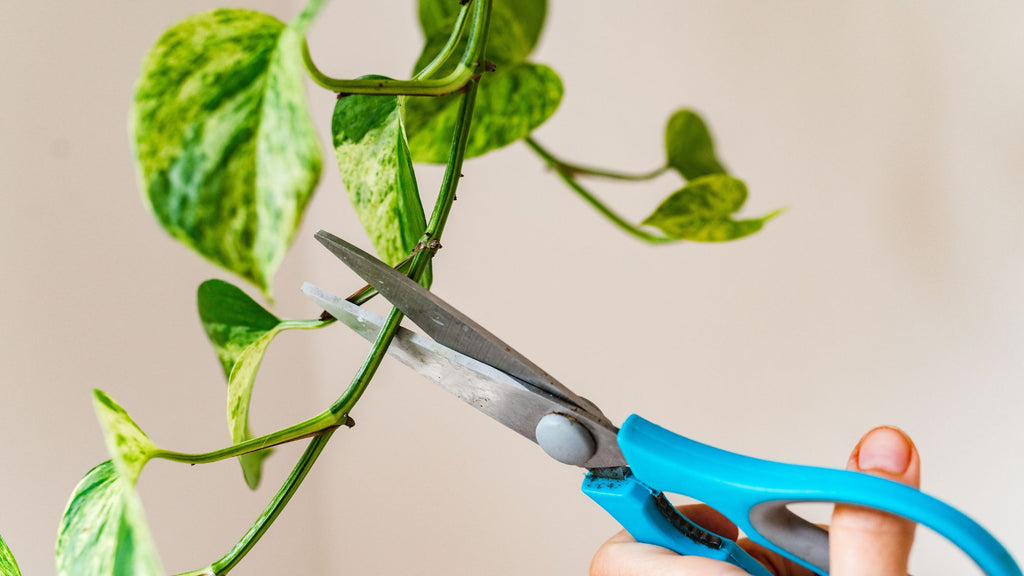
Propagating houseplants with stem cuttings
Stem cuttings are the darling of plant propagation. As long as you choose the right plant and properly include a node, most of your cuttings will sprout roots by simply plopping them in a jar of water and waiting.
Keep in mind—in most cases—your new plant will resemble your cutting in color and quality. So, if you're trying to propagate for leaf variegation or shape, include the leaf that you're trying to replicate in your cutting.
What are plant nodes?
Nodes are spots along the plant stem where new lateral shoots (either stems, leaves, or flowers) emerge. They resemble joints dividing the stem into sections.
To locate a node, place your fingers on the stem next to a leaf and trace the stem backward toward the soil. You will encounter another leaf, an aerial root, a smaller stem, or a nodule. In any case, you have found a node.
Read our guide to locating nodes on specific plants.
Types of stem cuttings
There are two types of stem cuttings: section cuttings, which do not need the end tip of the stem and tip cuttings, which must include the apical bud.
In both cases, you must include at least one node in the cutting, but some plants must also have the apical bud in order for the cutting to work.
Examples of houseplants that can propagate just from a section of stem with a node:
- Begonia
- Ti Plant
- Ivy
- Monstera
- Philodendron
- Pothos
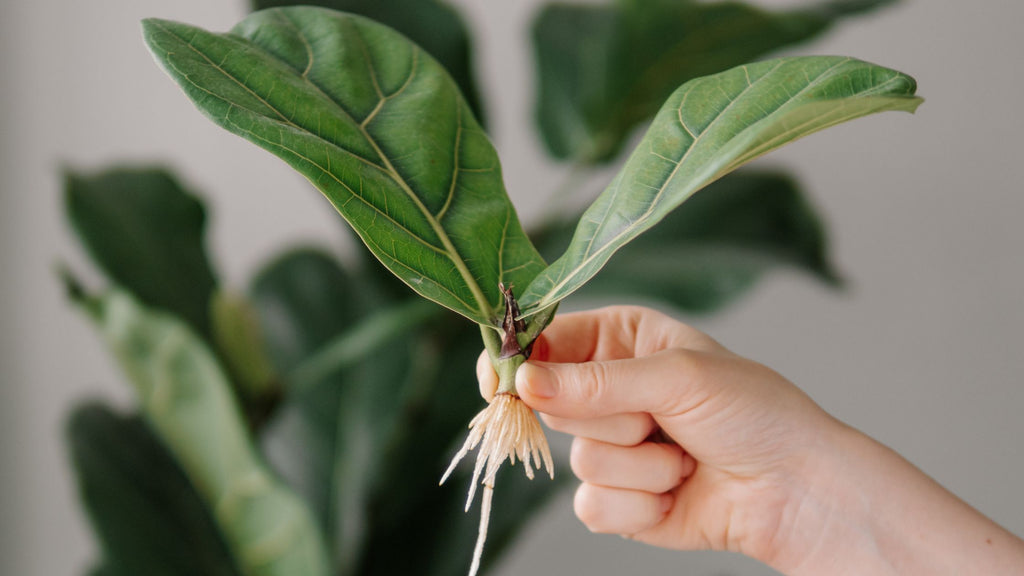
Examples of houseplants that require the tip (and node) in a propagation cutting:
- Christmas cactus
- Citrus
- Crassula (Jade Plant)
- Croton
- Ficus like Rubber Plant and Weeping Fig
- Hoya carnosa
- Maranta (Prayer Plant)
- Peperomia (varieties with above-ground nodes)
- Podocarpus
Which plants are easiest to propagate by stem cutting?
When it comes to monstera, pothos, vining philodendron, hoyas, baby bunny bellies, and just about anything that grows as vines, they root best from stem cuttings. Some plants that grow upright, like the polka dot begonia, can also be easily propagated by cutting.
Others, like woodier-stemmed ficus (fiddle-leaf figs and rubber trees), podocarpus, and thick-stemmed succulents, require a bit more special care to ensure the cuttings successfully root into new viable plants and don't rot in your water vessel. Before propagating in water or another medium, it's best to allow these plants to form a callus, a dried-out scab where the plant was cut.
How to propagate with a stem-cutting
- Find the section of the stem you want to propagate.
- Locate a node near where you intend to cut. Your cutting must contain a node!
- Cut 1-2 inches below that node (toward the soil) using sharp scissors.
- If your lowest node still has leaves, gently remove them by lightly grasping the stem above the node and pulling back towards the cut. The new roots will grow from these nodes.
- Allow hardier cuttings to form a callus. Depending on the cutting, this can take anywhere from a few hours to a few weeks or longer.
- Our favorite propagation method for most plants is a simple vessel of water, but feel free to experiment with some of the other rooting mediums we discuss later in this post. You can also use a propagation cone or other tool to lift your cutting away from the surface of your propagation vessel.
- For best results, add Root Drops to the water. Change out the water and add new root drops every five days.
- Wait for roots to develop. For most plants, you'll want to see secondary roots growing off the initial roots before transferring cuttings to soil.
How long does it take a stem cutting to root?
Depending on the species, vines and non-woody stemmed plants usually take one to four weeks for roots to develop. Hoyas will typically take longer than other vines. Woodier plants can take up to two months or more, and succulents fall somewhere in between.
Propagating houseplants with leaf cuttings
Don't let those TikToks fool you: Just because you can cut a leaf off a plant and it sprouts roots does not mean it will grow into a plant.
There is only a short list of houseplants that can successfully grow from a leaf cutting, including:
- Snake Plants
- ZZ plants
- Succulents with thick, fleshly leaves like sedum, kalanchoe crassula (jade plants), and echeveria
- Cactus varieties that produce pads like bunny ears cacti
- Peperomia (bush-types)
- African violets
- Begonia rex
There are three general types of leaf cuttings: petiole and leaf, leaf only, and split vein.
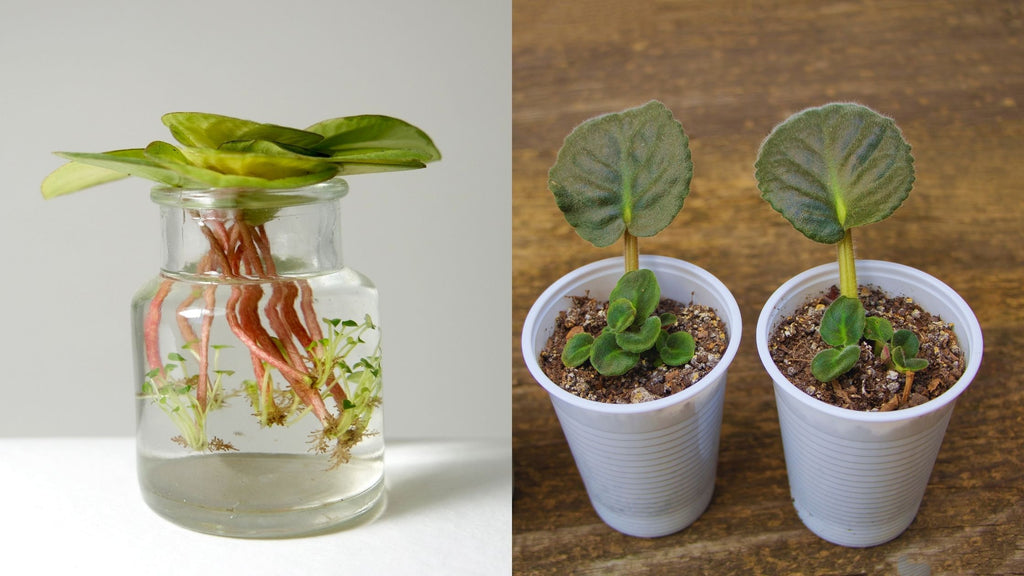
Propagation with petiole and leaf
A petiole is a stalk that joins the leaf to the stem (but does not include a node). Propagation with petiole and leaf works for plants such as African violets (pictured above on the left), peperomia (right), and begonia (that grow in a bush).
For a petiole cutting, remove a leaf with up to about an inch and a half of the petiole. Allow the cutting to callus. The lower end of the petiole goes into your water vessel or propagation medium. One or more new plantlets will form at the base of the petiole. The new plants can be severed from the original leaf and petiole when they have their own roots.
Leaf-only Propagation
Leaf-only propagation works with snake plants, African violets, and succulents with thick, fleshy leaves. Most plants need nodes to propagate, but these plants are the exception.
Choose plump and healthy leaves for propagation. With any of these thicker leaves, it's essential to let the cutting callus before placing it in your water or other medium. While they may successfully root in water to prevent rotting, a medium such as perlite may be a better choice.
Keep in mind that, unlike stem cuttings, leaf cuttings will most likely lose variegation with the new plantlet. A yellow striped snake plant will make solid green baby plants. If you desire to keep the variegation, you may want to try a different form of propagation.

How to propagate a snake plant
- To propagate a snake plant, cut a leaf into 3-4 inch pieces. At the bottom, notch the cut into an inverted V.
- Place the leaves on a paper towel until the cut ends dry out so they will not rot when planted.
- Insert the cuttings vertically into the medium.
- When watering your snake plant leaf, add Root Drops to the water you're using.
- Wait 1-4 months - roots can take quite some time! First, roots will form, and eventually, plantlets will form from the bottom cut. Be patient!
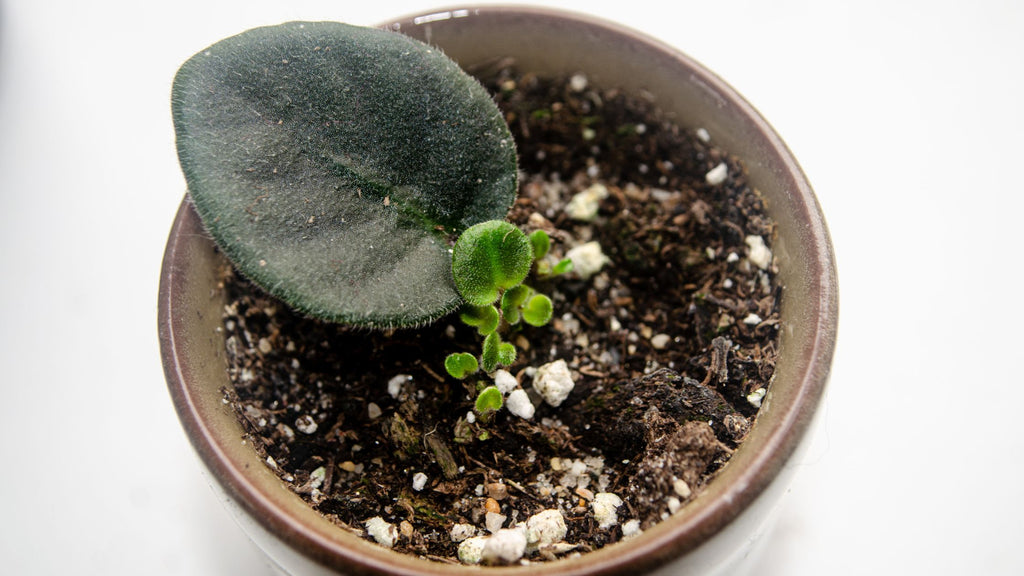
How to propagate an African violet leaf
- For African violets, cut a leaf from a plant and remove the petiole.
- Allow the leaf to callous for a day or two.
- Insert the leaf vertically into the potting medium, submerging the midvein in the rooting medium.
- When watering your African violet leaf, add Root Drops to the water you're using.
- Wait 3-4 weeks for roots to sprout and another 3-4 weeks for plantlets to form from the midvein.
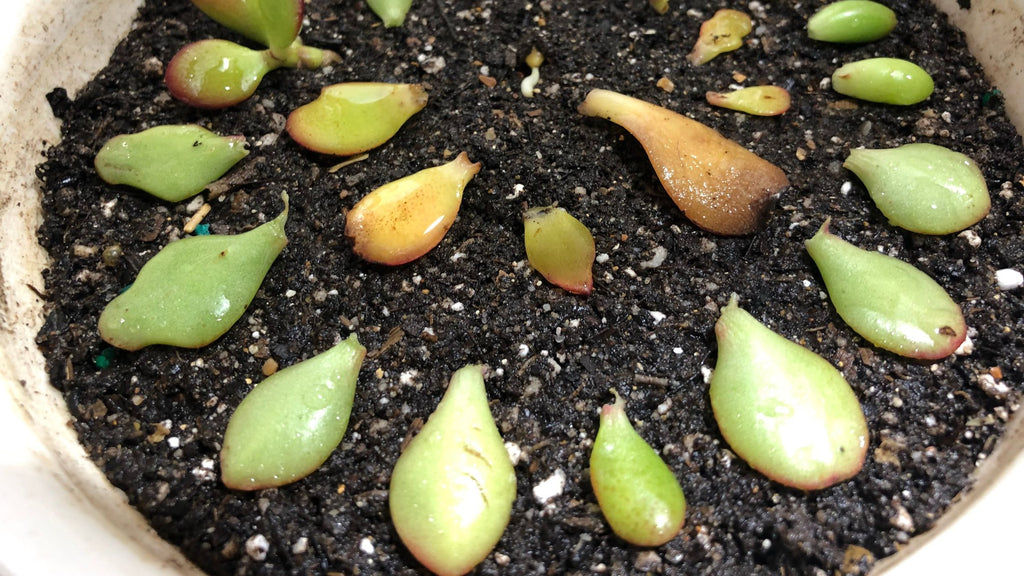
How to propagate a succulent leaf
- For succulents, remove the leaf from the plant.
- Put the leaves on a paper towel until the cut ends dry out so they will not rot when planted.
- After letting the leaves dry, transfer them on top of some succulent or cactus potting soil.
- Give the leaves bright filtered sunlight and mist them with water whenever the soil dries out, about a couple times a week.
- Roots will start sprouting, and baby plants will appear after about 4-6 weeks.
Split-vein Propagation
This method is worth mentioning because it's fun but more challenging to pull off and only works well on some plants. Rex Begonia and African Violets do well with split vein propagation. You can see the process here.
- For split vein propagation, detach a leaf from the plant and remove the petiole.
- Make cuts on several prominent veins on the underside of the leaf, or cut the leaf into slices so each piece has a central vein.
- Lay the cuttings, underside down, on the medium.
- If the leaf curls up, hold it in place by covering the margins with rooting medium or pinning them down with a hairpin or opened paper clip.
- New plantlets form at each cut.
Two ways to add humidity to your propagation vessel
Some propagation cuttings will thrive with humidity added either as the sole "medium" or in addition to sphagnum moss.
Humidity-only propagation medium
Humidity-only propagation is particularly effective for both petiole-and-leaf or leaf-only cuttings.
- Wet the cut ends of the cuttings, then dip them into a rooting hormone.
- Fill a clear container half-way with water and add root drops.
- Cover the top of the container with plastic wrap and make it taut by binding it with rubber bands around the neck of the container.
- Puncture small holes into the plastic close to the container's rim using a pin.
- Carefully ease the bottom third of the cuttings into the holes. Prop the rest of the cutting up on the rim of the jar so they don't fall in. The bottom of the cuttings should not touch the water.
- Ensure there is no gap between the cellophane and the cutting where the cutting penetrates the cellophane so humidity cannot escape the container.
- Place in bright, indirect light.
Sphagnum moss + humidity propagation
This method works well for leaf or petiole cuttings, especially snake leaf cuttings. It can also be used successfully with stem cuttings of a vine that just include nodes.
- Soak sphagnum moss in a bowl of water for a few minutes.
- Remove the moss and squeeze hard to remove excess moisture. If there is too much moisture, the cuttings will be liable to rot. The moss should be only slightly damp.
- Fill a resealable container with sphagnum moss.
- Insert the tips of the cuttings lightly into the moss.
- Seal the container and place it in bright, indirect light.
Want to learn more about propagating houseplants?
We hope this post on plant propagation with cuttings was super helpful. Let us know if you have any questions! And be sure to check out this comprehensive guide to the best ways to grow more from what you've got in your indoor jungle - coming soon!

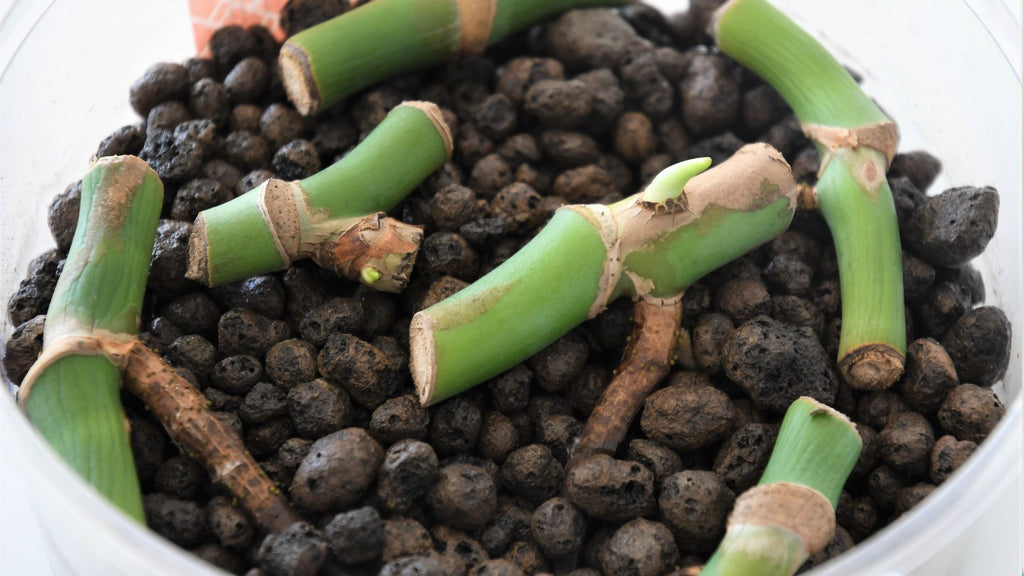
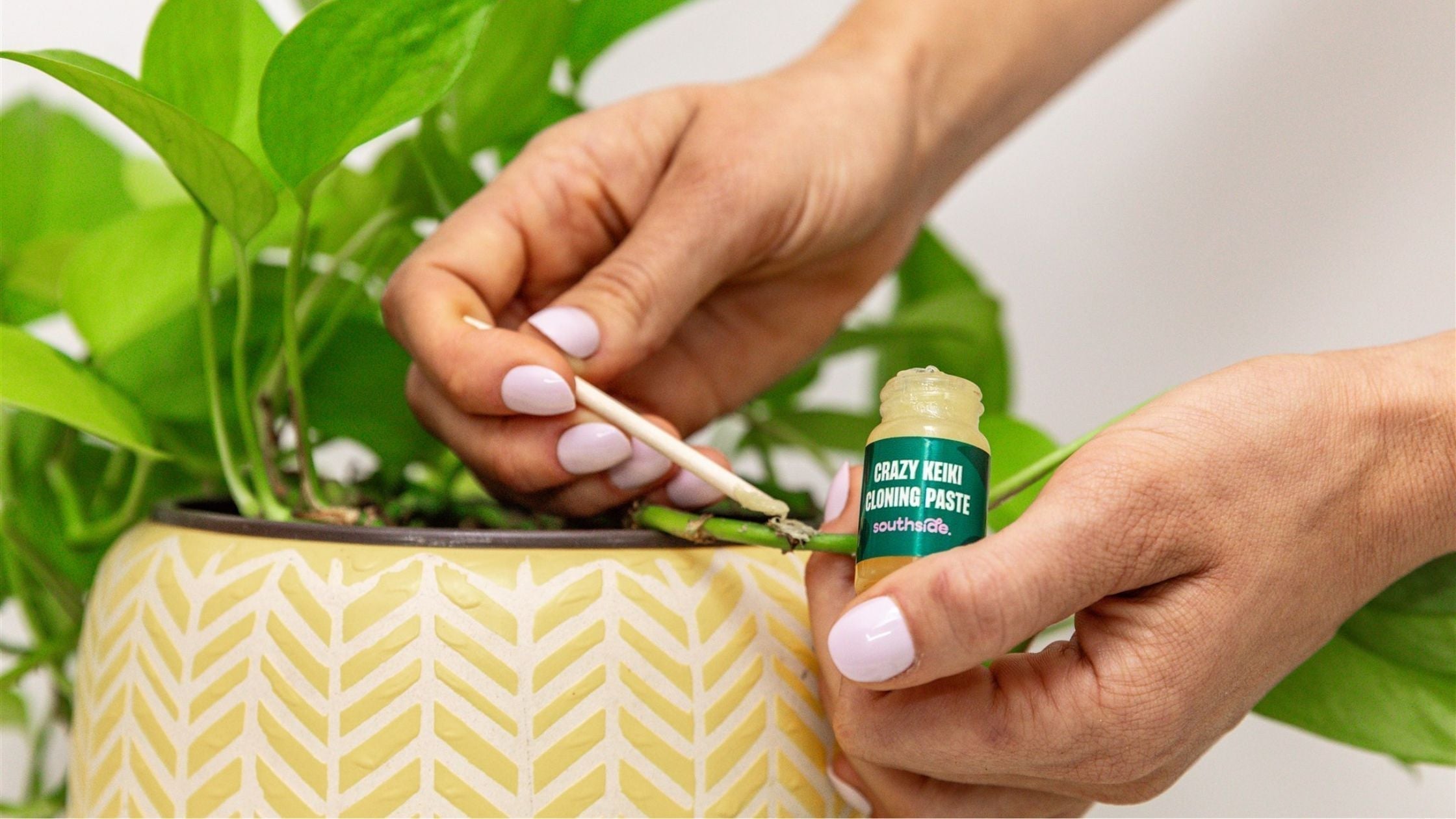
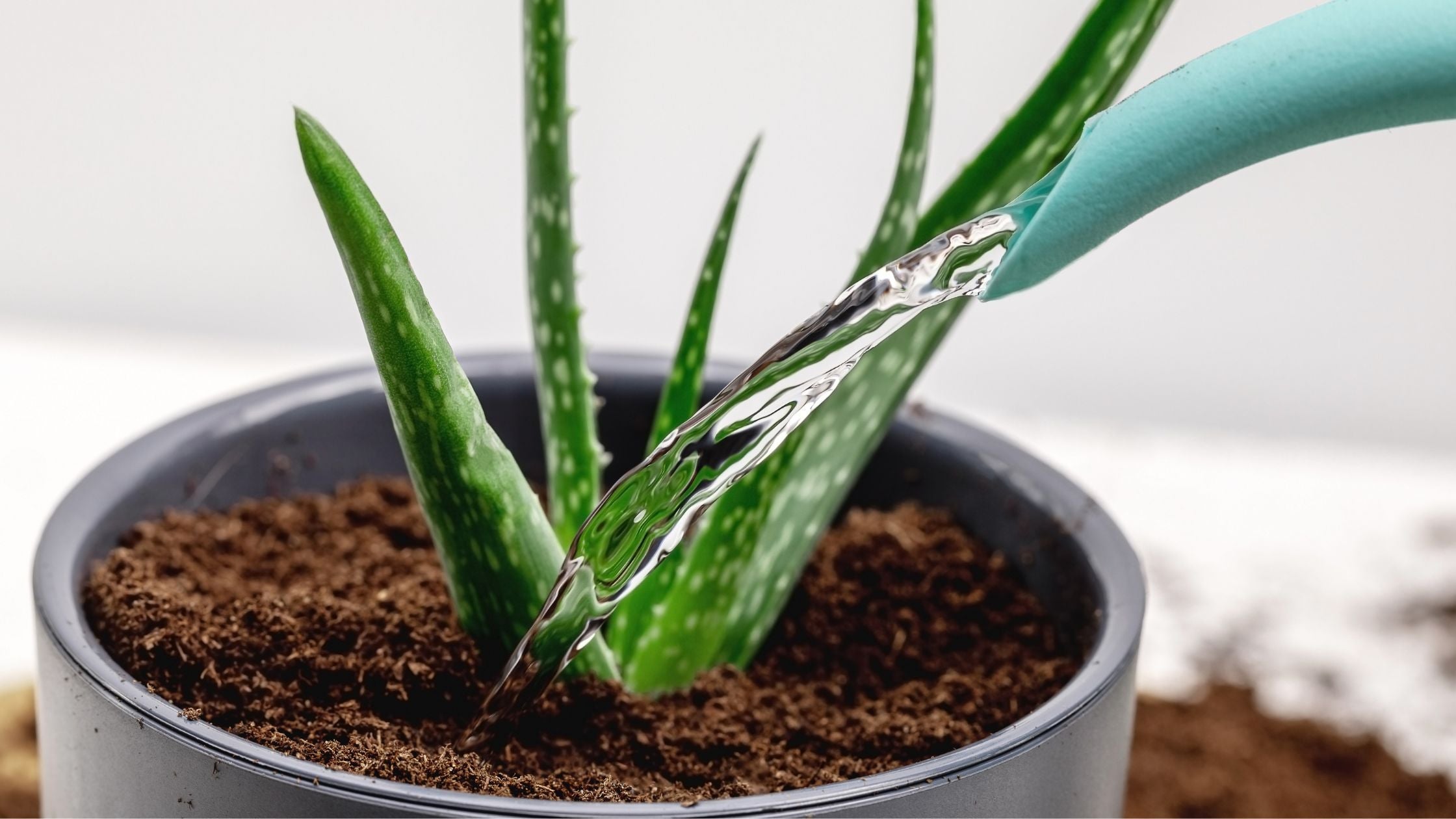
Leave a comment
This site is protected by hCaptcha and the hCaptcha Privacy Policy and Terms of Service apply.